Tibet Train Schedule 2024

| Destination | Train No | Depart | Arrive | Run Time |
| Beijing to Lhasa | Z21 | 19:53 | 11:36 | 39hrs.43mins |
| Shanghai to Lhasa | Z164 | 18:33 | 15:05 | 44hrs.32mins |
| Guangzhou to Lhasa | Z264 | 09:15 | 14:17 | 53hrs.02mins |
| Chengdu to Lhasa | Z322 | 21:11 | 07:41 | 34hrs.30mins |
| Chongqing to Lhasa | Z223 | 21:56 | 07:41 | 33hrs.45mins |
| Xining to Lhasa | Z8991 | 21:50 | 17:39 | 19hrs.49mins |
| Lanzhou to Lhasa | Z917 | 11:16 | 12:00 | 24hrs.44mins |
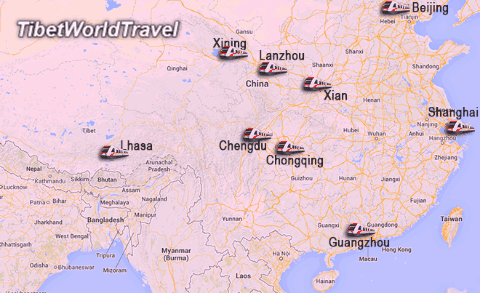
Schedule of Trains from Lhasa, Tibet
| Destination | Train No | Depart | Arrive | Run Time |
| Lhasa to Beijing | Z22 | 15:50 | 08:28 | 40hrs.38mins |
| Lhasa to Shanghai | Z166 | 11:50 | 12:03 | 48hrs.13mins |
| Lhasa to Guangzhou | Z266 | 12:40 | 20:11 | 55hrs.31mins |
| Lhasa to Chengdu | Z324 | 19:00 | 07:03 | 36hrs.03mins |
| Lhasa to Chongqing | Z224 | 19:00 | 06:26 | 35hrs.26mins |
| Lhasa to Xining | Z8992 | 17:50 | 14:49 | 20hrs.59mins |
| Lhasa to Lanzhou | Z918 | 09:25 | 09:27 | 24hrs.02mins |
Chinese trains are divided into various categories according to their speed. The train number usually starts with a letter, which indicates the category of train. For instance, Z19 means direct express train, and D316 refers to EMU Train (Electric Multiple Unit train, also called high-speed train). But most of the trains from Chinese cities to Lhasa are Z trains.(Direct express trains).
| Train Class | Type | Info |
| G or C | Bullet train | trains are all modern high-speed trains, and currently are appoint to the best categories.
Most of them are 200-300km/h daytime trains; a few D-trains are 200km/h overnight trains. |
| D | 2nd Bullet train | D train is also called Harmony or bullet train in China. The designed top speed of D train is 250km/h.
These trains have been widely used for serving fast and frequent transport between main cities, such as Beijing-Shanghai, Shanghai-Suzhou and Shenzhen-Guangzhou. |
| Z | Direct Express Train | The ‘Z’ trains are now ranked as the second best category train. The top speed of Z-trains is 160km/h,
which is the most efficient transport for long-distance travel after the EMU trains. Generally, Z-trains are a direct train from a to b without a stopover, but in some cases they do have a few stops. |
| T | Express Train | The T-trains have limited stops on the routes, especially in the major cities. The highest speed is 140km/h. Almost every T-series of train is equipped with soft-sleeper, soft-seat, hard-sleeper and hard-seat. |
| K | Fast Train | The top speed of K-trains is 120km/h, it has more stops than the T-trains.The K-series of trains are equipped with
air-condition and the four classes of train berths. |
| L | Temporary Train | This L trains operates only during the peak travel season, such as the Chinese Spring Festival and the National Holiday. These trains are not listed in the official fixed train schedule. It is not advised to take L-trains if you have other options as they are known to be relatively slow
and regularly subject to delays. |

Xining to Lhasa Train schedule 2024
The railroad connection between Xining. The capital city of Qinghai province and Lhasa. Capital of Tibet is the so called Qinghai Tibet Railway. Also the highest and longest railway in the world. The length of the railway is 1,956 km. Construction of the 815 km section between Xining and Golmud was completed by 1984. The 1,142 km section between Golmud and Lhasa was opened on 1 July 2006. This railway is the first to connect the Tibet Autonomous Region to any other province. Passenger trains run from Beijing, Chengdu, Chongqing, Guangzhou, Shanghai, Xining, and Lanzhou.
This train line has 45 stations along the 1956 km long QinghaiTibet railway from Xining to Lhasa and the scenery between Xining and Golmud is the Qinghai Lake(Kokonor). And between Golmud and Lhasa are Yuzhu Peak Station, Chumar River, Tuotuo river, Budongquan, Tanggula Mountain, Namtso Lake, Nagqu, Damshung, Yangpachen. And wild animals like Tibet antelope. Tibet wild ass. Wild Yak. And so on.
Why Xining is the best place to take train to Lhasa ?
First of all. Xining is located on the eastern edge of the Tibetan Plateau and the upper reaches of the Tsongchu River. It is the political, economic, and cultural center of Qinghai Province with an average altitude of about 2,200 metres (7,200 ft). Xining was an important link in the Silk Road. It continues to be an important rail and road link to the hinterlands of the all the regions of Tibetan plateau.Therefore because of its intermediate elevation. Xining is a good place to spent one or two night to get your body acclimatized to the high elevation.
Secondly. The Train from Guangzhou to Lhasa takes almost 2 and half day. And the train reach Lhasa from Beijing. Shanghai. Chengdu and Chongqing take nearly 2 days. And there is nothing to see on all those trains until Xining. Xining to Lhasa only takes 21 hrs. Therefore Xining is the best place to take train to Lhasa.
Finally. Xining has more chances to getting trains to Lhasa because there are 7 trains per day. Among them. There are 2 trains(Z9815) (Z6811) direct trains to Lhasa every day. And the other 5 trains are from Beijing. Shanghai. Guangzhou. Chongqing and Lanzhou also stops at Xining and add passenger. Therfore Xining is the best place to take train to Lhasa.
Here are the trains leaving from Xining to Lhasa.
| Train No | From | To | Depart Xining | Arrive Lhasa | Run Time |
| Z323 | Chongqing | Lhasa | 11:41 | 07:41 | 20hrs.00mins |
| Z917 | Lanzhou | Lhasa | 12:50 | 10:20 | 21hrs.30mins |
| Z21 | Beijing | Lhasa | 15:24 | 11:36 | 21hrs.10mins |
| Z9815 | Xining | Lhasa | 17:00 | 13:40 | 20hrs.12mins |
| Z265 | Guangzhou | Lhasa | 18:13 | 14:17 | 20hrs.04mins |
| Z8991 | Xining | Lhasa | 21:50 | 17:39 | 19hrs.49mins |
| Z165 | Shanghai | Lhasa | 19:26 | 15:05 | 19hrs.39mins |
Tibet Train Ticket Info
There are three types of train ticket available on Tibet trains. Soft sleeper (first class ticket). Hard sleeper ticket (second class ticket) and hard seat (only a seat. no bed).

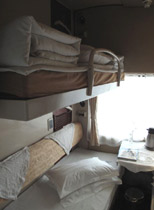
Soft Sleeper compartment consists of two upper and two lower berths. The berths are wider than the hard sleepers. More importantly, each compartment has a door. The fare is about 50% higher than the hard sleeper.
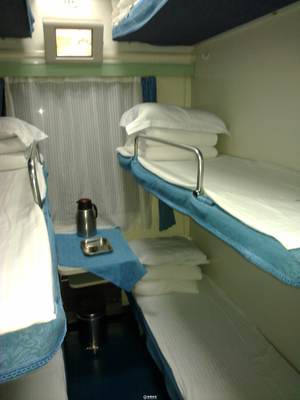 A Hard Sleeper compartment usually comprises six berths arranged in three levels on the two sides. As the compartments lack doors, it is hard to have a good sleep due to continuous snores, kids’ crying, and the sound of the train moving.
A Hard Sleeper compartment usually comprises six berths arranged in three levels on the two sides. As the compartments lack doors, it is hard to have a good sleep due to continuous snores, kids’ crying, and the sound of the train moving.
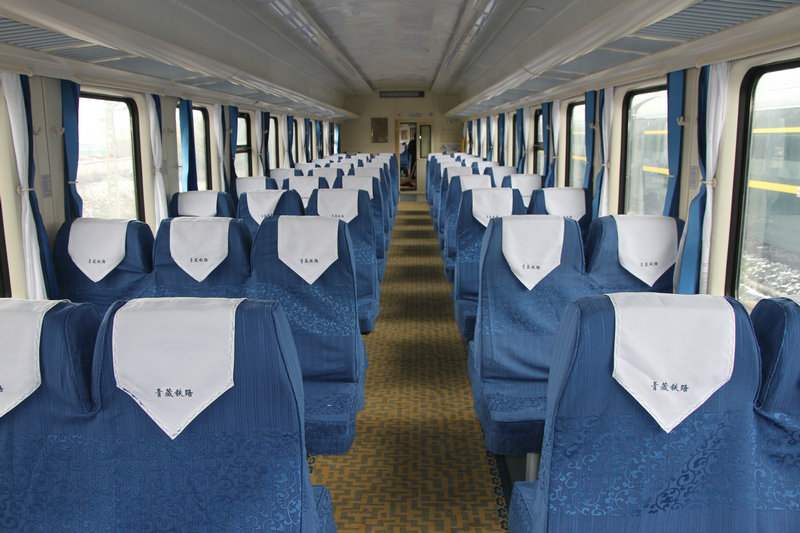 Hard Seat is the cheapest among all classes. As the name implies, it can be something of an ordeal, especially for a long journey. Not only are the seats hard, the seat backs are almost vertical and cannot be adjusted. The carriages are always noisy, smelly, and crowded with non-seat passengers, especially during peak seasons. There are five seats in a row, two on one side and three on the other side. A small table is set between every two opposite rows.
Hard Seat is the cheapest among all classes. As the name implies, it can be something of an ordeal, especially for a long journey. Not only are the seats hard, the seat backs are almost vertical and cannot be adjusted. The carriages are always noisy, smelly, and crowded with non-seat passengers, especially during peak seasons. There are five seats in a row, two on one side and three on the other side. A small table is set between every two opposite rows.
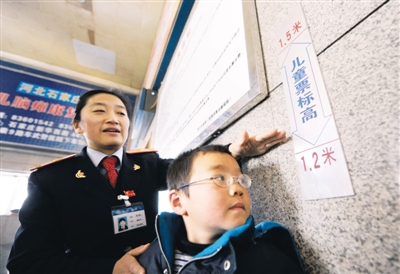 Children under 120cm tall travel free, 120-150cm tall travel for half fare, over 150cm tall pay full fare . Child discounts only apply to the ‘base’ part of a sleeper fare, so in sleepers it’s closer to a 25% reduction on the total fare.
Children under 120cm tall travel free, 120-150cm tall travel for half fare, over 150cm tall pay full fare . Child discounts only apply to the ‘base’ part of a sleeper fare, so in sleepers it’s closer to a 25% reduction on the total fare.
 Tibet World Travel Tibet Tour, Tibet Trip, Tibet Travel, Tibet Train, Tibet Trekking,
Tibet World Travel Tibet Tour, Tibet Trip, Tibet Travel, Tibet Train, Tibet Trekking,
